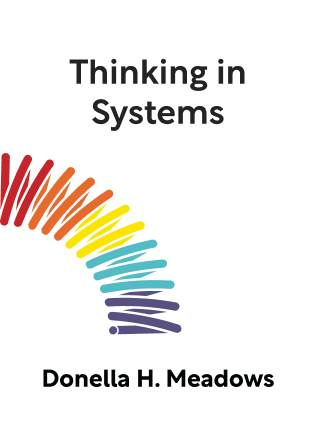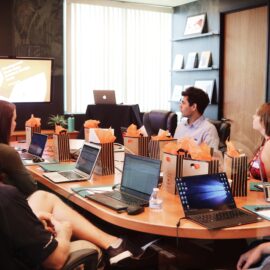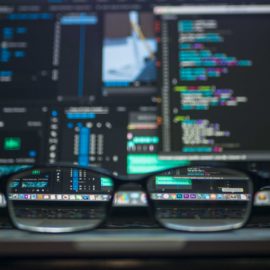

This article is an excerpt from the Shortform summary of "Thinking in Systems" by Donella H. Meadows. Shortform has the world's best summaries of books you should be reading.
Like this article? Sign up for a free trial here .
Can system thinking examples help you understand how systems work? What kind of system thinking examples are there?
These system thinking examples can help you understand how systems work. System thinking is a way to ensure governments, companies, and societal structures run efficiently.
Read more about these system thinking examples.
System Thinking Examples: Two Renewable Stocks
We also depend on stocks that are renewable, that replenish themselves after we harvest from them. Examples include lumber from trees we can replant, and farming animals and plants that we can replenish.
One of the top system thinking examples is the idea of fishing from the ocean. The extraction system of capital stock is the same as with oil mining, except instead of oil rigs, the capital stock represents fishing vessels. The capital stock has an inflow of reinvestment, and an outflow of depreciation. The capital stock determines the harvest rate of the fish. So why is this one of the best system thinking examples?
However, the stock it is harvesting from is now renewable—the fish population has a runaway loop that creates an inflow of more fish.
There are a few nuances to the situation:
- Like oil, the lower the fish population, the more expensive it becomes to catch them, and the less profitable fishing is.
- Below a certain stock level, the regeneration of fish may stop—when there are too few fish, they find it harder to find each other and mate. This can cause extinction of a species.
Depending on how the fishing industry behaves, we can arrive at very different system outcomes even with the same system thinking examples.
Outcome 1: Dynamic Equilibrium
The fishing industry is one of the major real world systems. It can balance its harvest rate so that it matches the inflow rate of fish. The fish population is held at a constant stock level.
This also requires that the industry constrain its level of capital stock to be steady. It reinvests in capital stock only to balance the rate of depreciation, thus keeping the harvest rate steady. If it invested any more, the capital stock would rise, and the harvest rate would increase beyond the replenishment rate of the population. This leads to the next system outcome.
Outcome 2: Overfishing, with Oscillations
Here, the industry’s harvesting rate exceeds the replenishment rate of the population. Oscillations appear because there is a natural feedback loop at work in these real world systems:
- For some time, the harvest rate increases and reinvestment increases, thus decreasing the fish stock.
- As the fish stock decreases, it becomes more costly to farm fish. The inflow of reinvestment into capital stock decreases, and the capital stock level decreases due to depreciation.
- As the stock decreases, the harvest rate decreases, allowing the fish to replenish itself.
- As the fish stock rises, fishing gradually becomes more profitable again, thus encouraging more reinvestment, and restarting the oscillation cycle.
As with the car manager on her car lot, in real world systems, oscillations appear in the system due to delays. It takes time for the fishing industry to respond to a declining fish population by reducing investment, and it takes time to reinvest once fishing is good again.
This might not be a deliberate malicious action by the industry—a new fishing technology like deep-sea fishing nets may increase fishing efficiency and reduce costs. However, the oscillations have real human impacts—due to the long times it takes to replenish a fish population, this might introduce cycles extending over decades, which in turn affect jobs and communities.
Outcome 3: Overfishing to Extinction
Here, the industry harvests the fish population beyond the point of replenishment. When there are too few fish in the sea, they don’t find each other and they can’t reproduce enough to overcome the fishing rate.
What happens is a wipeout of the fish population, which in turn destroys the fishing industry. Without careful management, the industry may, without knowing it, drive itself out of business.
A few factors make extinction more likely:
- External factors like pollution may harm the population’s reproduction rate. This raises the critical point below which replenishment is no longer possible.
- If there are long delays in recognizing a dwindling resource stock, and in slowing capital growth in response, the capital stock can grow too quickly and overwhelm the resource.
Questions to Understand a System
We’ve seen a series of system models and connected them to real-life situations. You might now see the benefit of systems-level thinking—it can clarify a situation and how it is likely to unfold in the future.
As you try to view the world with a systems lens, these three lines of questioning will help you more accurately understand the system:
1. What are the driving factors of the system? Would the driving factors affect the system as described?
- Is the model good? Does it reflect the actual dynamics of the system?
2. What is causing the driving factors?
- Are there feedback loops at work? Surely the cause influences the effect, but does the effect influence the cause?
- What other factors external to the system affect the driving factors?
- For a population’s birth rate and death rate, might economics, social trends, and medical technology be involved?
3. How likely are the driving factors to unfold as predicted?
- This is guessing the future, which is inherently inaccurate. But you can weigh the likelihood of different possibilities, and simulate the future in those different scenarios.
Consider there system thinking examples and the different ways they can operate depending on the system.

———End of Preview———
Like what you just read? Read the rest of the world's best summary of Donella H. Meadows's "Thinking in Systems" at Shortform .
Here's what you'll find in our full Thinking in Systems summary :
- How the world, from bathtub faucets to fish populations, can be seen as simple systems
- The key system traps that hold back progress, such as escalating arms races and policy addiction
- Why seeing the world as systems can give you superpowers in work and life






